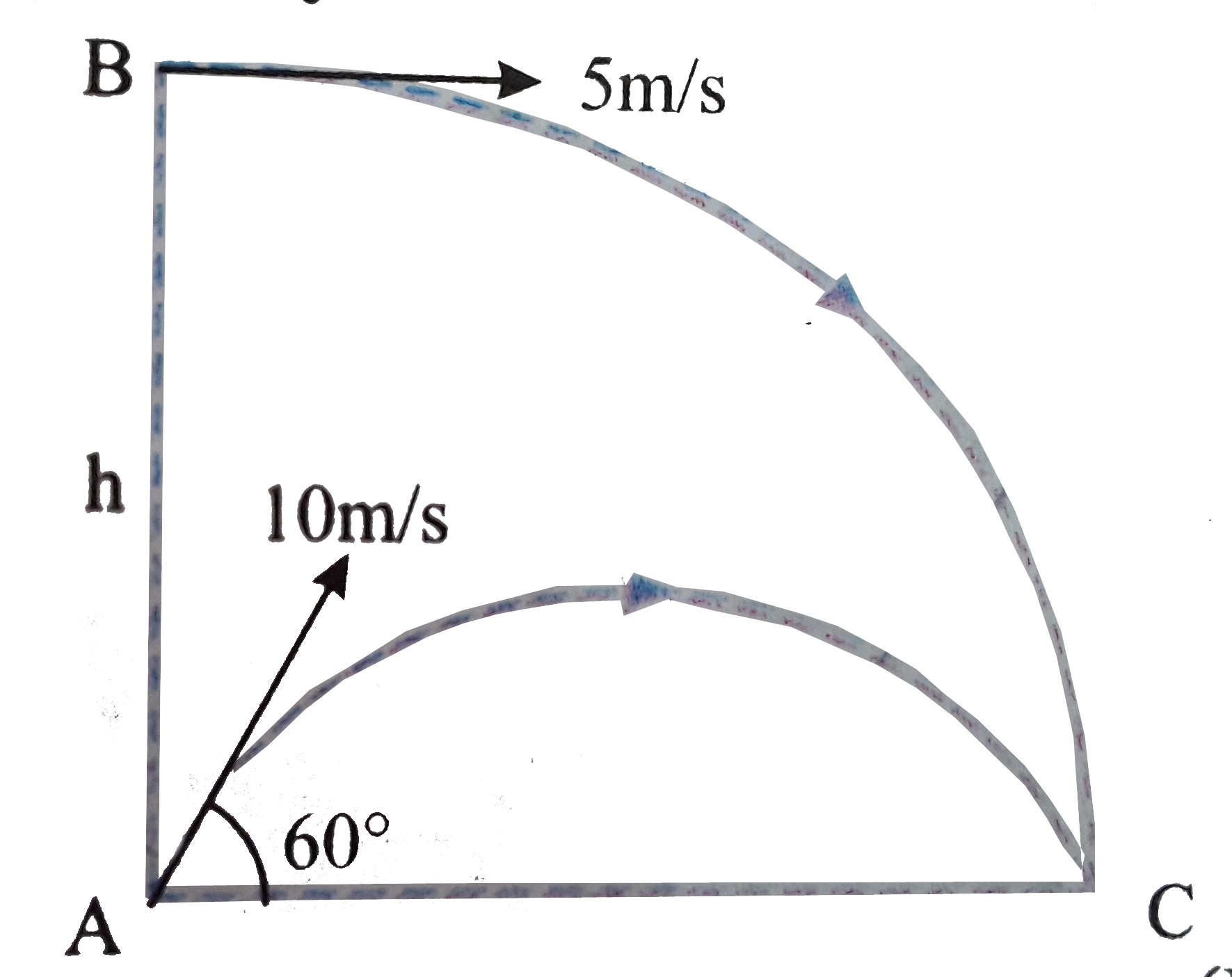When a rigid sphere is projected horizontally with an initial linear velocity over a uniformly rough horizontal floor
the kinetic energy of the sphere remains constant throughout the motion
the kinetic energy of translation is slowly shared by rotation, but the total kinetic energy decreases initially and finally attains a constant value
the total kinetic energy of the sphere decreases continuously on doing work against friction and finally reduces to zero
a constant frictional force, opposite to the translation motion acts on the sphere through out its motion
The correct Answer is:B
Total K.E. decreases due to negative work done by friction.
Similar Questions
A uniform sphere is projected horizontally with a purely translatory motion with initial velocity of 7m/s on a rough horizontal surface with coefficient of friction 0.2 . Given, g=10ms2 ,the time after which the sphere stops slipping (in seconds) is
View SolutionA sphere is projected horizontally with a speed v from the edge of a table of height h above a level horizontal floor. At the same instant, another sphere is released from the edge of the same table. Identify which of the following statements is true?
View Solution
Knowledge Check
- Question 1 - Select One
A ball is projected vertically down with an initial velocity from a height of 20m onto a horizontal floor. During the impact it loses 50% of its energy and rebounds to the same height. The initial velocity of its projection is
A20ms−1B15ms−1C10ms−1D5ms−1 - Question 2 - Select One
A bode mass m is projected at an angle θ with the horizontal with an initial velocity u, the average power of gravitational force over the whole time of flight is.
AmgucosθB12mg√ucosθC12mgusinθDzero - Question 3 - Select One or More
A particle is projected in air with an initial velocity u directed at an angle θ above horizontal. After time t0 the velocity of the particle is directed at angle ϕ above horizontal.
AAt time t0 magnitude of verticle component of velocity of the particle is ucosθcotϕBAt time t0 magnitude of rate of change of speed of the particle is gsinϕCThe radius of curvature of the trajectory at time t0 is u2cos2θgcos3ϕDThe value of time t0 is ucosθ(tanθ−tanϕ)/g.
A body of mass 2kg is projected with an initial velocity of 5ms−1 along a rough horizontal table. The work done on the body by the frictional forces before it is brought to rest is
View SolutionA projectile is projected at an angle α with an initial velocity u. The time t, at which its horizontal velocity will equal the vertical velocity for the first time
View SolutionA particle of mass m is projected with an initial velocity U at an angle θ to the horizontal. The torque of gravity on projectile at maximum height about the point of projection is
View SolutionA particle is projected from ground with some initial velocity making an angle of 45∘ with the horizontal. It reaches a height of 7.5m above the ground while it travels a horizontal distance of 10m from the point of projection. The initial speed of the projection is
View SolutionA particle A is projected from the ground with an initial velocity of 10m/s at an angle of 60∘ with horizontal. From what height should an another particle B be projected horizontally with velocity 5m/s so that both the particles collide in ground at point C if both are projected simultaneously g=10m/s2.
 View Solution
View Solution

